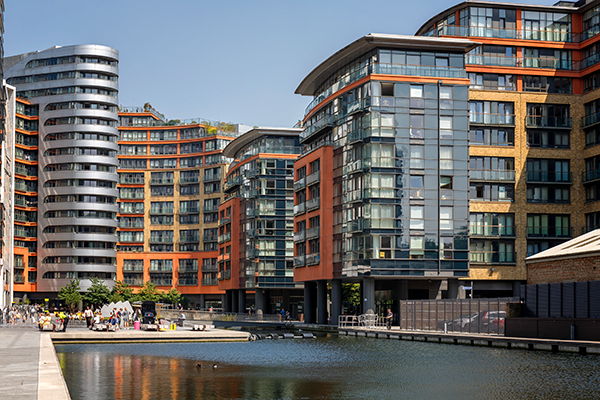Multifamily properties are in high demand as institutional investors are coming off the sidelines because of increased clarity regarding the impact of the COVID-19 pandemic on the sector.
Investment activity in all real estate assets slowed last year since the pandemic created extraordinary uncertainty, causing lenders to tighten up lending requirements, and equity investors to focus on maintaining liquidity. For multifamily assets specifically, buyers sought price discounts that didn’t meet sellers’ expectations, which impacted transaction activity. Total real estate transaction volume dropped 33.5% to $383.1 billion in 2020 compared to $575.9 billion in 2019, according to CBRE. However, in the fourth quarter there was a smaller 20% drop year-over-year to $139.2 billion, driven mostly by multifamily deals, which accounted for 40.7% of all real estate transactions in the quarter with $56.7 billion.
CBRE forecasts that this focus in multifamily is likely to continue, and estimated that there’ll be $148 billion worth of multifamily transactions for all of 2021, outpacing 2020’s $138.7 billion. CBRE also predicted offshore investment firms, which pulled back last year due to the pandemic, will also return. Inbound investments from foreign investors into multifamily assets fell to $8.2 billion in 2020 from $10.7 billion in 2019. However, experts have said there is strong demand for multifamily properties from foreign institutions as a defensive play, because multifamily has been more resilient than other asset classes amid ongoing economic uncertainty.
While there is a high level of uninvested capital waiting to be deployed across all investment sectors, real estate investments in particular continue to attract more dollars. There are currently 565 commingled real estate funds targeting at least a 10% net return that have raised $358 billion, according to Real Estate Alert’s 2021 survey released on March 17. This is an increase of 14% from the prior peak of $315 billion in 2019’s survey. And the amount of uninvested capital from the current $358 billion raised is $242 billion.
Multifamily has widespread interest from domestic and foreign investors mainly because the industry shook off challenges caused by the pandemic, keeping in line with its record of resiliency in times of turmoil. Rent collections only slipped slightly, and occupancy rates remained strong, and although leasing interest initially fell during the onset of the pandemic, in the second half of the year, leasing activity rebounded.
Also, unlike office properties, retail centers, hotels, or entertainment venues, multifamily buildings never shut down and housing became more important due to stay-at-home orders, social distancing and remote working. Additionally, capital was still available for multifamily assets because government agencies Freddie Mac and Fannie Mae continued to provide financing, and borrowing costs were reduced to historically low rates after the Federal Reserve dropped its interest rates to nearly zero to support the market. Moreover, federal government relief aid bolstered the multifamily industry as stimulus checks and extra weekly unemployment payments gave millions of American households cash to meet financial obligations, including rent. The second and third rounds of stimulus also included more than a combined $55 billion for emergency rental assistance, housing vouchers and homeless services.
 The continued interest for multifamily properties kept pricing stable last year, but there’s so much interest that buyers have been eager to acquire pre-stabilized multifamily properties, which are developments that have yet to complete the lease-up process, according to Real Estate Alert. The industry publication attributed the trend to the large amount of capital chasing properties, the low cost of debt, and promising news about the pandemic. Pre-stabilized properties, especially those in suburban Sun Belt areas, have even received stabilized property pricing, Real Estate Alert indicated.
The continued interest for multifamily properties kept pricing stable last year, but there’s so much interest that buyers have been eager to acquire pre-stabilized multifamily properties, which are developments that have yet to complete the lease-up process, according to Real Estate Alert. The industry publication attributed the trend to the large amount of capital chasing properties, the low cost of debt, and promising news about the pandemic. Pre-stabilized properties, especially those in suburban Sun Belt areas, have even received stabilized property pricing, Real Estate Alert indicated.
The Sun Belt markets have continued to gain steam because they feature milder climates and more affordability. In addition, the pandemic accelerated the trend towards single-family rentals (SFR) in those markets, as more people desired spacious and affordable homes. Institutional investors have been ramping up their investments in SFR communities, and this trend appears to be continuing to grow with more interest for multifamily assets.
Looking ahead to the rest of 2021, widespread vaccine rollouts and diminishing COVID-19 cases are expected to ease investor sentiment and result in the reopening of affected industries, boosting economic activity. Some experts are predicting that this could lead to inflation, which is the increase in prices for goods and services, resulting in a decrease of purchasing power. Because multifamily properties can hedge inflation, interest could remain high for the asset class.
While the long-term effects of COVID-19 on the multifamily industry are unknown, many tailwinds could continue to push transaction activity forward through 2021.
